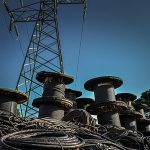Renewable Energy Suffers from Long Interconnection Queue Times

Image courtesy of Bureau of Land Management under Attribution 2.0 Generic Deed, resized to 700 x 391 pixels.
According to a new report from Enverus Intelligence Research (EIR), renewable energy projects are currently plagued by extremely long interconnection queue times. Specifically, the report claims that solar power, wind power, and battery/storage projects are currently waiting a whopping 4-9 years to get connected to local grids. Ouch!
What is Driving the Delayed Interconnection Queue Times?
The macro-level problem is the sheer volume of investment and development requests, stemming from 2022 Inflation Reduction Act incentives, as well as the push to retire coal-fired plants. These factors have overwhelmed interconnection queues. Because of the resource constraints, many projects will ultimately be suspended or cancelled – EIR predicts that only about 10% of all proposed projects will come online in the next 3 years. Late-lifecycle cancellation rates are especially troublesome within the PJM Interconnection.
Looking at a tier beneath the macro level, queue-time length largely depends on the geographic region due to differing economic and policy variables.
For example, the report found that the shortest interconnection queue durations were in New England (Independent System Operator for New England or ISO-NE) and Texas (Electric Reliability Council of Texas or ERCOT).
Conversely, the longest lags were found in California (California Independent System Operator or CAISO) and New York (New York Independent System Operator or NYISO), mainly due to cumbersome regulatory environments.
As you can see, while overall investment and development volume has broadly spiked in recent years, interconnection queue times seem to be region dependent. Different states have different transmission permitting processes, regulations and requirements, supply chain constraints, and decision-making philosophies and resources.
Not only do these delays put a crimp on utility development costs and resources, but they also increase the taxpayer burden. And obviously, it puts utilities’ ability to meet increased future demand at risk. Therefore, my hope is that the FERC intervenes in ways that help force the streamlining of these processes. Otherwise, the current long interconnection queue times are likely to get even longer.


